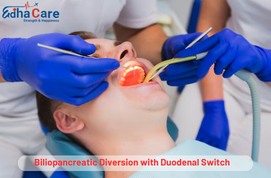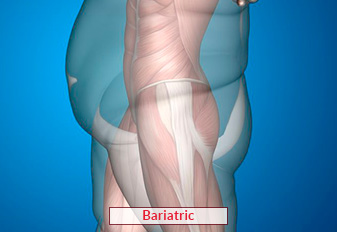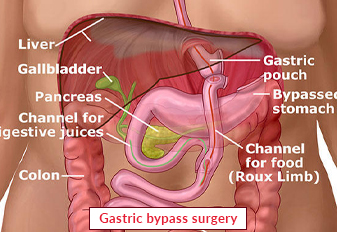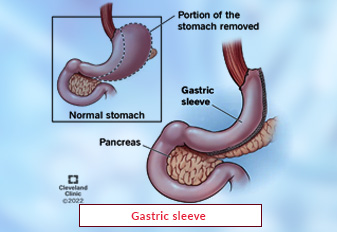Biliopancreatic Diversion With Duodenal Switch

A type of reducing weight surgery called biliopancreatic diversion with duodenal switch (BPD/DS) attempts to decrease stomach size and improve the digestive process to help very obese patients reduce their weight. In order to make the smallest stomach pouch and limit the consumption of foods, part of the stomach is removed during this procedure. Furthermore, a significant portion of the tiny intestine is bypassed, which reduces the quantity of calories and minerals absorbed. By reducing the amount of nutrients taken as well as limiting the body's ability to utilize calories from the food, this combined approach results in substantial body weight loss BPD/DS is regarded as a comprehensive and very effective weight loss procedure that regularly results in substantial and long-lasting fat loss in addition to improvement in medical conditions related to obesity, such as type 2 diabetes along with high elevated blood pressure. But this comes with hazards and calls for a lifetime diet and changes in lifestyle. BPD/DS patients should speak to their medical provider about the possible advantages and disadvantages.
Book an AppointmentAbout Biliopancreatic Diversion With Duodenal Switch
Biliopancreatic Diversion with Duodenal Switch Symptoms : The primary symptoms of Biliopancreatic Diversion with Duodenal Switch (BPD/DS) are nutritional deficits and alterations in digestive system functioning. Patients might feel satisfied sooner after dining because of early satiety brought on by a smaller stomach pouch created during surgery. This can result in consuming a smaller diet overall and decreasing fat as a result. Also, it's commonplace to have changes in bowel behavior, including shifting stool or vomiting, which can be brought on by changes in your gastrointestinal tract and decreased nutrient absorption. The body's capacity to absorb essential minerals and vitamins could be hampered by bypassing an area of the tiny intestines, raising the probability of nutritional deficiencies. Deficiencies can manifest as weakness, exhaustion, loss of hair, and other indicators of malnourishment. To effectively prevent or control deficiencies in nutrition, patients have to follow a strict diet plan and have their nutrient intake frequently checked. Regular interaction with healthcare providers is also important to deal with your symptoms and ensure the greatest possible outcome for your wellness after BPD/DS surgery.
Biliopancreatic Diversion with Duodenal Switch Causes : The two primary strategies applied during biliopancreatic diversion with duodenal switch (BPD/DS) operations are restriction and absorption. In order to limit food intake, narrower stomach pouches are created, and part of the small intestinal tract is rerouted to decrease the digestion of nutrients. A smaller stomach pouches limit the quantity of meals that can be consumed, which reduces the amount of energy consumed. This causes a limitation of dietary intake. Furthermore, the loss of nutrients and calories results from bypassing a part of the small intestinal tract, which reduces the amount of area available for the absorption of nutrients. When combined, these measures can help people with severe obesity lose a large amount of weight. To control possible issues and enhance long-term outcomes, BPD/DS requires a lifelong commitment to changes in diet, nutrition supplementation, and medical follow-up.
Biliopancreatic Diversion with Duodenal Switch Remedies : The goals of treatment for Duodenal Switch with Biliopancreatic Diversion (BPD/DS) are to support long-term weight management and provide appropriate nutrition. Due to decreased nutrient absorption, patients usually need lifetime vitamin and mineral supplements to prevent shortages. Dietary changes are vital; a balanced diet low in sugary and high-fat foods and high in fruits, vegetables, fiber, and protein is essential. In order to evaluate nutritional status identify deficiencies early on and make prompt supplementing adjustments, regular medical monitoring is necessary. Taking up stress-reduction techniques and regular exercise are two healthy lifestyle habits that promote weight loss and general well-being. Counseling and psychological support can help with emotional difficulties and the transition to life after surgery. To maximize results and ensure safety, a thorough, multidisciplinary strategy incorporating nutritional, medical, and psychological assistance is necessary.
Procedure of Biliopancreatic Diversion With Duodenal Switch
Preoperative Evaluation: In order to determine whether a patient is an appropriate candidate for surgery and find any possible risks or warnings, patients going through the Biliopancreatic Diversion with Duodenal Switch (BPD/DS) process go through an extensive preoperative assessment which involves a review of their medical information, an examination of the body, laboratory tests, and psychological screening.
Anesthesia and Incisions: For the purpose to maintain the patient unconscious and without pain for the duration of the procedure, a general anesthesia is administered prior to the beginning of the procedure. The doctor then uses less invasive laparoscopic procedures to make multiple tiny cuts in the tummy to reach the intestines and stomach.
Sleeve Gastrectomy: A sleeve gastrointestinal surgery is the first process in the BPD/DS surgery. The process includes a surgical removal of an important section of the stomach, leaving behind a tiny pouch that resembles a tube. This restriction on diet promotes losing weight through reducing the quantity of food that might be eaten.
Duodenal Switch: The duodenum switch part of the operation is performed by the doctor soon after the sleeve gastrectomy. By dividing the duodenum in two and connecting the end section directly with the lower portion of the small intestinal tract, a sizable piece of the tiny intestine is bypassed. This bypassing reduces the quantity of nutrients and calories that get absorbed from food, helping in losing weight more effectively.
Gastric Bypass: In certain situations, a tiny tube constructed from stomach contents and connected straight to the lower portion of the small intestinal tract may be produced prior to the duodenal switch operation. This intensifies the surgical procedure's malabsorptive effect resulting in more weight reduction.
Closure and Recovery: Following the BPD/DS treatment, the patient is moved to the recovery area after the cuts have been closed with surgical staples or sutures. In addition to receiving painkillers and advice on eating habits and physical activity levels throughout the recovery phase, patients are constantly observed for any issues that may arise after surgery.
Postoperative Follow-Up: After being released from the hospital for surgery, patients have routine follow-up meetings with their medical team to discuss their recovery, review their nutritional status, and receive continued assistance with managing their weight and general health.
Require Assistance?
Get A Quick Callback From Our Healthcare Experts






